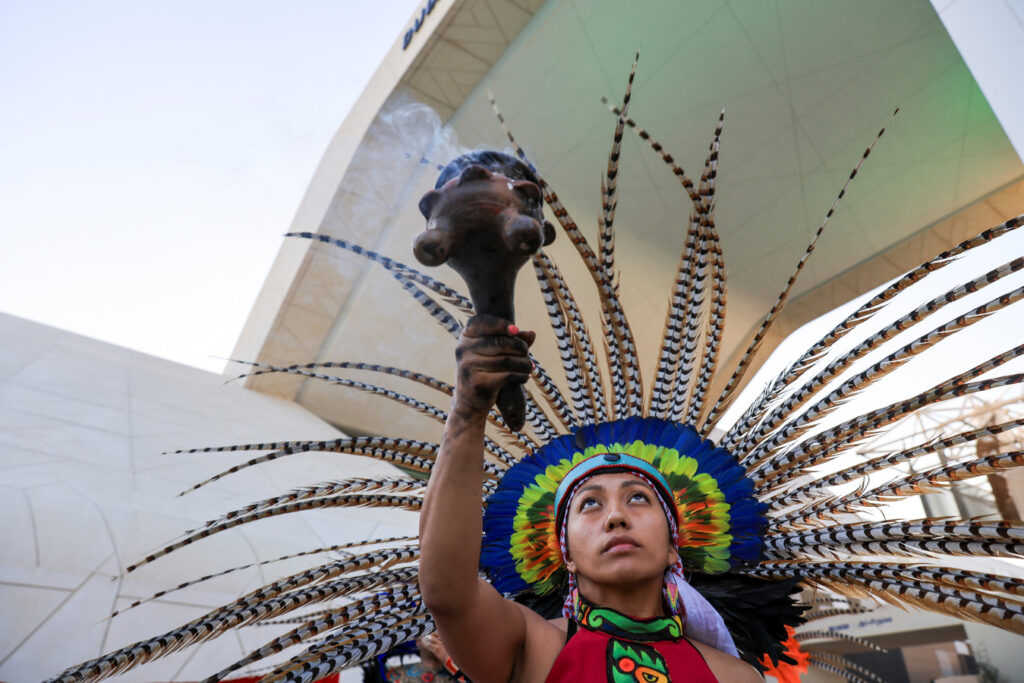Success at the Dubai climate summit threatens to turn into a disaster for forests, according to conservationists (ALGEMEEN DAGBLAD)
An apparent success at the UN climate summit in Dubai threatens to turn into a disaster for forests and biodiversity, according to conservationists. This concerns the call to triple the amount of renewable energy by 2030. In addition to growth in wind and sun, this probably also means more burning of forests.
By Edwin Timmer

“This is a very dangerous development,” warns Peg Putt of the Global Forest Coalition at the climate conference. She welcomes more renewable energy, but not in the form of wood pellets. “Biomass is not climate neutral, and cutting down forests actually reduces the capacity to absorb CO2. Large-scale combustion of biomass should therefore be excluded from the goal of tripling renewable energy,” says the Australian activist in Dubai.
800 year old tree
She receives support from concerned forest protectors in Indonesia and from dozens of international NGOs, including the Dutch Clean Air Committee. “You can’t tell us that burning an 800-year-old tree will produce sustainable electricity,” said David Tong, campaign director for Oil Change International. “The burning of forests should not be accepted as renewable energy.”
More than 120 countries have already supported the call in Dubai to generate 11,000 gigawatts of renewable energy by 2030. This makes this European Union initiative a success and the tripling will probably be included in the final text of the summit. More renewable energy is necessary to achieve that other major ambition: an end to, or at least a phasing out of, fossil fuels such as oil and gas.
But exchanging fossil fuels en masse for biomass combustion, especially on the scale at which energy continues to be needed, would be a disaster for the planet, the NGOs say. The International Energy Agency (IEA) already expects explosive growth in the demand for bioenergy in the coming decades. It currently accounts for 6 percent of our total energy consumption and will increase to 13 percent in 2030 and to 18 percent in 2050, according to the EIA. “These numbers are horrendous,” says Putt. “That much woody biomass cannot possibly be sustainable.”
We expect that the new co-firing will soon require forests and plantations in Sumatra, Kalimantan and Papua.
Beyrra Triasdian, Trendasia
Indonesia is one of the Asian countries that is now turning to the use of biomass. Although coal-fired power stations should actually be phased out slowly, the Indonesian government wants to make them ‘sustainable’ by mixing wood pellets up to 5 to 10 percent in addition to coal. For the time being this concerns 57 coal-fired power stations, but possibly more than a hundred in which trees are additionally fueled.
“This is not the right solution,” said Beyrra Triasdian, an Indonesian researcher from the Trendasia organization. “We expect that the new co-firing will mainly require forests and plantations in Sumatra, Kalimantan and Papua. In total, this amounts to an area of 2.3 million hectares of forest that is needed.” This concerns an area the size of more than half of the Netherlands.
Triasdian: “And then we are not even talking about exports. Because countries such as Japan and South Korea are also looking for biomass for their power stations.” The renewable energy researcher fears for her country’s biodiversity if natural forests are converted into wood pellet monocultures. “In addition, it is a threat to indigenous groups of people who live in the forests and make their living from those forests,” says the Indonesian. Before the start of the climate summit, the new climate commissioner Wopke Hoekstra already received a letter about the subject. Dozens of NGOs called on Hoekstra to exclude biomass from the desired tripling of renewable energy. “It is crucial that the use of forest biomass is phased out as the global energy system transitions to renewable energy sources,” Fenna Swart of the Dutch Clean Air Committee said in the letter.
‘Not in mandate’
Hoekstra hardly seems to be involved with biomass in Dubai for the time being. A source at the European negotiating delegation states that biomass is not a topic of discussion during the talks with other countries. The subject is ‘not in the mandate’ with which the European Commissioner was sent to Dubai. Hoekstra’s predecessor, GroenLinks-PvdA leader Frans Timmermans, as European Commissioner ensured that biomass in the EU is still classified as ‘sustainable’.
In the Netherlands, Minister Rob Jetten (Climate) has restricted the use of biomass since 2022 and no longer provides subsidies for new biomass projects. Nevertheless, energy company RWE now wants to completely convert its two coal-fired power stations in Geertruidenberg and Eemshaven to biomass. The first permits for this have been applied for. The company wants to capture the CO2 and put it underground.
